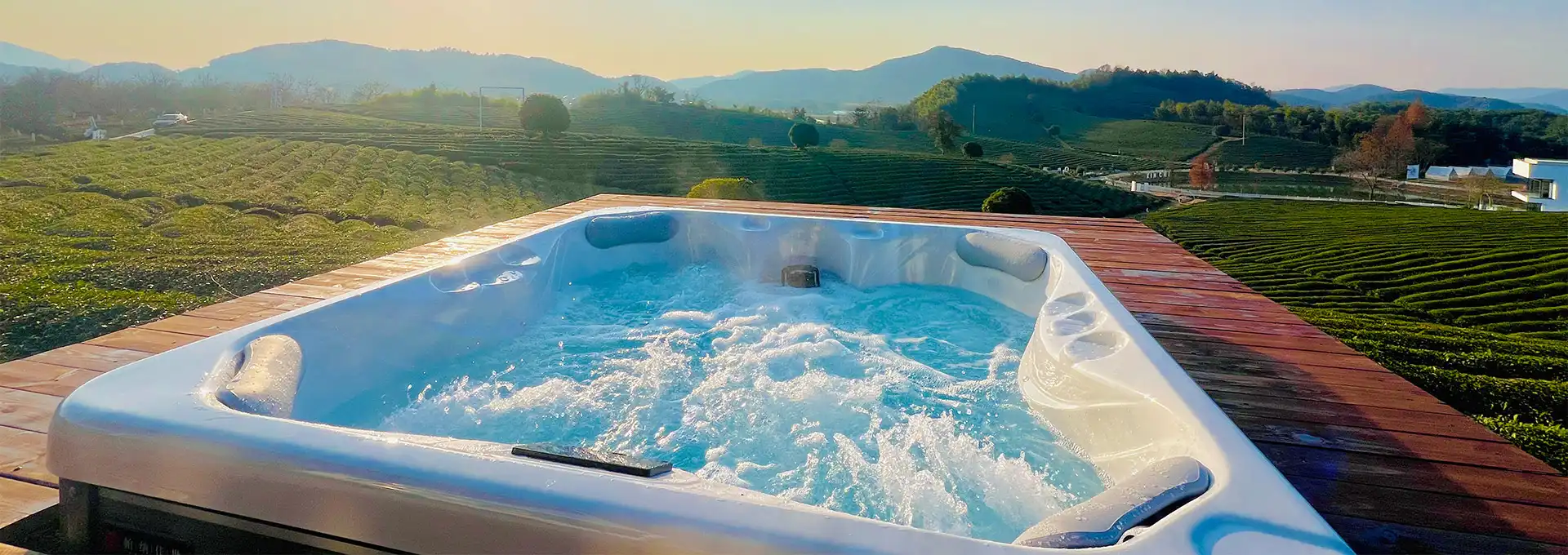How Much Electricity Does a Swim Spa Use?
2024-12-19 16:57:41
Swim spas have become increasingly popular among homeowners looking for a versatile aquatic fitness and relaxation solution. These innovative units combine the benefits of a swimming pool and a hot tub in a compact, energy-efficient package. However, potential buyers often wonder about the energy consumption of swim spas and how it might impact their electricity bills. In this comprehensive guide, we'll explore the factors that influence swim spa electricity usage and provide insights to help you make an informed decision.
What factors affect swim spa energy consumption?
Several factors contribute to the overall energy consumption of a swim spa. Understanding these elements can help you estimate and manage your swim spa's electricity usage more effectively:
- Size and capacity: Larger swim spas typically require more energy to heat and maintain water temperature. The water volume directly impacts the amount of electricity needed for heating and circulation.
- Insulation quality: Well-insulated swim spas retain heat more efficiently, reducing the need for constant reheating. High-quality insulation materials and techniques can significantly lower energy consumption.
- Climate and outdoor temperature: The geographical location and local climate play a crucial role in determining energy usage. Colder regions may require more electricity to maintain desired water temperatures, especially during winter months.
- Usage frequency and duration: How often and how long you use your swim spa affects its energy consumption. More frequent and extended use may lead to higher electricity bills.
- Water temperature settings: Higher temperature settings demand more energy to maintain. Finding a balance between comfort and energy efficiency is essential.
- Pump efficiency: The efficiency of the circulation and jet pumps impacts overall energy consumption. Modern, energy-efficient pumps can help reduce electricity usage.
- Cover quality: A well-fitted, insulated cover helps prevent heat loss when the swim spa is not in use, reducing the energy required to maintain water temperature.
By considering these factors, you can make informed decisions about your swim spa's operation and maintenance to optimize energy efficiency.
How does a swim spa's energy consumption compare to a traditional pool?
When comparing the energy consumption of swim spas to traditional swimming pools, several key differences emerge:
- Water volume: Swim spas typically hold significantly less water than traditional pools, ranging from 1,000 to 2,500 gallons compared to 10,000 to 30,000 gallons for an average in-ground pool. This smaller volume requires less energy to heat and maintain.
- Heating efficiency: Swim spas are designed with energy efficiency in mind, featuring better insulation and smaller, more focused heating systems. This allows them to heat water more quickly and maintain temperature more efficiently than larger pools.
- Year-round use: Unlike traditional pools, which are often seasonal in many climates, swim spas can be used year-round. While this may lead to consistent energy use throughout the year, it also means you're getting more value from your investment.
- Pump and filtration systems: Swim spas use smaller, more efficient pumps and filtration systems compared to traditional pools. These systems are designed to circulate and clean a smaller volume of water, resulting in lower energy consumption.
- Evaporation and heat loss: The smaller surface area of a swim spa leads to less evaporation and heat loss compared to a larger pool. This factor, combined with better insulation and covers, contributes to improved energy efficiency.
On average, a swim spa consumes between 2,000 to 3,000 kilowatt-hours (kWh) of electricity per year, depending on usage patterns and climate. In contrast, a traditional pool can use anywhere from 2,000 to 3,000 kWh per month during the swimming season. This significant difference in energy consumption makes swim spas an attractive option for environmentally conscious homeowners and those looking to minimize utility costs.
How can I reduce the electricity usage of my swim spa?
To optimize the energy efficiency of your swim spa and reduce electricity consumption, consider implementing the following strategies:
- Invest in a high-quality cover: A well-insulated, tight-fitting cover is crucial for preventing heat loss when the swim spa is not in use. Ensure your cover is in good condition and replace it if it becomes waterlogged or damaged.
- Optimize temperature settings: Lower the water temperature when the swim spa is not in use or during periods of infrequent use. Even a few degrees can make a significant difference in energy consumption.
- Use a timer for circulation pumps: Program your circulation pumps to run during off-peak electricity hours, typically at night. This can help reduce energy costs and ensure efficient water circulation.
- Maintain proper water chemistry: Properly balanced water requires less energy for filtration and sanitation. Regularly test and adjust your water chemistry to maintain optimal levels.
- Clean or replace filters regularly: Clogged filters force pumps to work harder, consuming more energy. Clean your filters according to the manufacturer's recommendations and replace them when necessary.
- Consider using a solar cover: A solar cover can help heat your swim spa using the sun's energy, reducing the workload on your electric heater.
- Upgrade to energy-efficient equipment: When replacing pumps, heaters, or other components, opt for energy-efficient models that can significantly reduce electricity consumption.
- Use wind barriers: If your swim spa is exposed to strong winds, consider installing windbreaks or privacy screens to reduce heat loss and evaporation.
- Regular maintenance: Keep your swim spa in top condition by performing regular maintenance checks and addressing any issues promptly. Well-maintained equipment operates more efficiently.
- Consider alternative energy sources: Explore the possibility of using solar panels or heat pumps to supplement your swim spa's energy needs, potentially reducing reliance on grid electricity.
By implementing these energy-saving strategies, you can significantly reduce your swim spa's electricity consumption without compromising on enjoyment or functionality. Remember that the initial investment in energy-efficient features and practices can lead to substantial long-term savings on your electricity bills.
In conclusion, while swim spas do consume electricity, their energy usage is generally much lower than that of traditional swimming pools. By understanding the factors that influence energy consumption and implementing energy-saving measures, you can enjoy the benefits of a swim spa while minimizing its impact on your electricity bills and the environment.
For more information on hot tub installations and to find out more about our products, please feel free to contact us at info@iparnassus.com.
References:
- Energy.gov. (2021). Swimming Pool Covers.
- Swim University. (2021). How to Save Money on Pool Heating Costs.
- U.S. Department of Energy. (2021). Energy-Efficient Home Design.
- ENERGY STAR. (2021). Pool Pumps.
- American Pool Enterprises. (2021). How Much Electricity Does My Pool Use?
- Swim Spa Source. (2021). Swim Spa Running Costs.
- Hydropool. (2021). Energy Efficiency.
- Master Spas. (2021). Energy Efficient Swim Spas.
- Endless Pools. (2021). Energy Efficiency.
- Pool Research. (2021). Swimming Pool Energy Efficiency.
Send Inquiry
Related Industry Knowledge
- How to Sink a Swim Spa?
- Does a Hot Tub Help a Cold?
- How Long Does It Take a Hot Tub to Heat?
- Can You Get Electrocuted in a Hot Tub?
- Do You Have to Winterize a Hot Tub?
- What is an Outdoor Hot Tub?
- Can Being in a Hot Tub Make You Feel Sick?
- Can a Newborn Go in a Hot Tub?
- Do I Need New Spa Side Control?
- How Do I Maintain Proper Water Chemistry and Sanitation in My Outdoor Swimming Spa?



